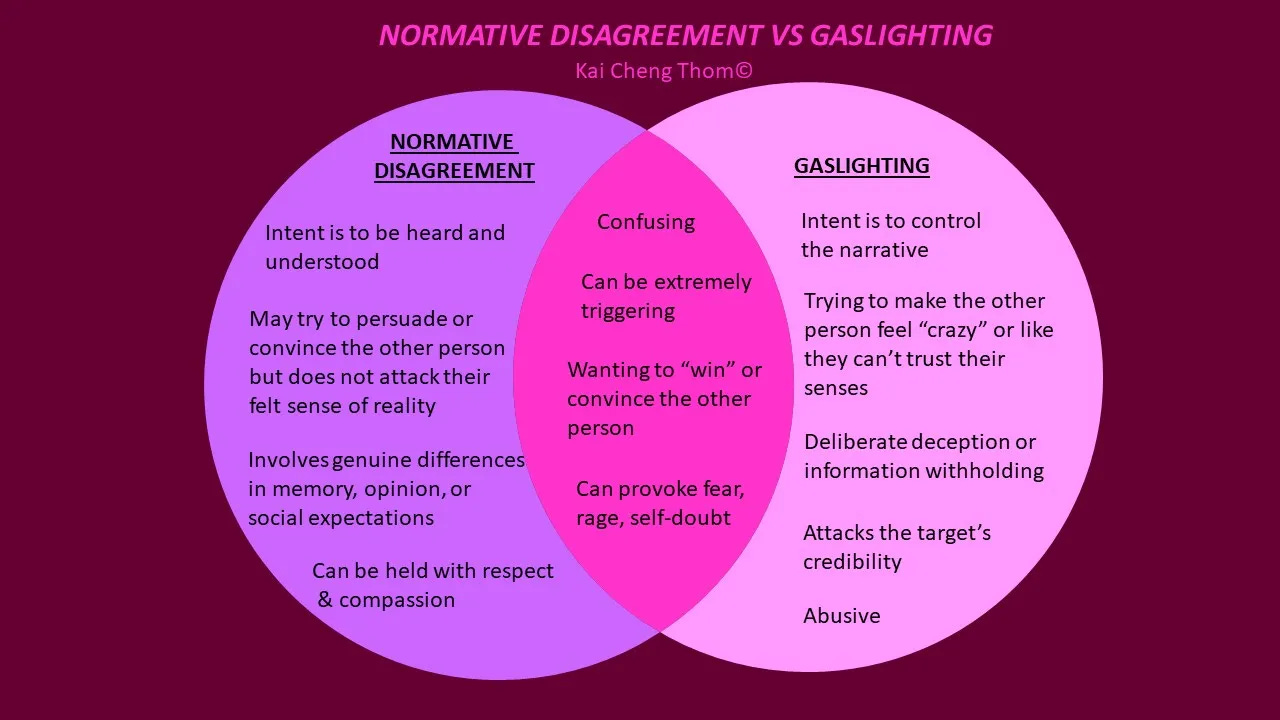With all the chaos and confusion swirling around us, how do we know what is true? How do we know if we are safe? How do we stay grounded in reality?
It’s always the intent of Well Canto to uplift and offer practical solutions to help shape a positive mindset. But I admit to feeling stuck, mentally exhausted, anxious, and a bit hopeless lately.
What’s going to happen next?
What, exactly, am I supposed to be doing?
WHAT IS GOING ON?
READ WITH CARE
Today’s Well Canto Newsletter deals with one tactic common in a larger pattern of emotional abuse: gaslighting. There is much literature on gaslighting and emotional abuse in general as it appears in personal relationships, but today we will zoom out to explore the societal gaslighting we are experiencing daily by the current autocratic administration.
DISAGREEMENT, OPINION, AND LIES
Daily we are told that day is night and black is white and up is down and we cannot even believe our own eyes and ears. But isn’t this just a difference of opinion? Can’t we just agree to disagree? Doesn’t my right to free speech mean I can lie as often as I wish?
Distinct from disagreement, gaslighting involves a nefarious goal: to create a power-over dynamic. This ‘protects’ the perpetrator’s enfeebled self-image without regard for the well-being of their target.
No, we are not crazy. We have not lost our reason or our senses, nor our ability to discern truth from fiction, or facts from lies. But a constant barrage of misleading narratives, false rumors, and ‘alternative facts’ is designed to keep us questioning everything, including one another.
So, how are we to stay rooted in reality? And what exactly is gaslighting, anyway?
“Some people try to be tall by cutting off the heads of others.” —Paramahansa Yogananda
GASLIGHTING 101
Gaslighting is a psychological manipulation tactic that causes a person to question their own reality, memories, and perception of events. It's a form of emotional abuse perpetrated in personal, professional, and public relationships.
ORIGIN
The term gaslighting comes from the 1938 British play Gas Light by Patrick Hamilton. In the play, a husband manipulates his wife into believing she is losing her mind by dimming and brightening the gas lights in their home. He then denies that the lights changed when she points it out. The husband's goal is to isolate his wife and steal from her.
WHY DO PEOPLE GASLIGHT?
Gaslighting is most often employed by individuals or groups who seek to gain or maintain power and to justify their sense of superiority. These manipulators aim to establish dominance by undermining their target’s ability to trust their own judgment, perception, and even memories - ultimately reducing their autonomy.
Gaslighters are terrified of confrontation, of losing control, being rejected, or being exposed. They strive to avoid responsibility and consequences for their own actions by deflecting blame onto someone else.
In the realm of politics, gaslighting can be a potent tool for those in power or those seeking to influence public opinion. By challenging the veracity of facts, attacking independent institutions like the media (“Fake news!”) or judiciary (“Witch hunt!”), and promoting alternative narratives, political figures manipulate public perceptions and consolidate their influence by creating an environment where objective truth is called into question.
STAGES OF GASLIGHTING
1. Lie and Exaggerate.
The gaslighter uses false presumptions and accusations, rather than objective and verifiable facts to claim there is something wrong with their target.
2. Repetition.
The gaslighter repeats false statements constantly to stay on the offensive, control the conversation, and dominate the relationship.
3. Blow Up When Challenged.
When the gaslighter gets called out on their lies, they escalate and double-down on their attacks, denial, blame, and false claims.
4. Burn Out the Victim.
The gaslighter eventually wears out their target, who becomes discouraged, fearful, and questions their identity and reality.
5. Codependent Relationships.
The gaslighter encourages codependency - excessive emotional or psychological reliance on a partner - then threatens to withdraw security and safety.
6. False Hope.
The gaslighter will occasionally treat their target with kindness or remorse, giving false hope for a normal relationship.
7. Dominate and Control.
The end goal for a pathological gaslighter is to gain control, dominate, and take advantage of another individual or group. By maintaining manipulations and lies the gaslighter keeps their target(s) in a constant state of insecurity, doubt, and fear.
TECHNIQUES
Gaslighting typically occurs over time through a variety of tactics, and is an escalating process. Learn to recognize some of these techniques:
Denial: Gaslighters deny facts, events, or their own actions.
Distortion: Gaslighters present false information as truth.
Projection: Gaslighters blame their target for their own actions.
Trivialization: Gaslighters belittle their target's feelings.
Isolation: Gaslighters isolate their target from friends and family.
Withholding: Gaslighters pretend not to understand or refuse to listen.
Countering: Gaslighters question their target’s memory.
Blocking/Diverting: Gaslighters change the subject or question their target's thoughts.
Lying: Gaslighters lie about or deny something and refuse to admit it.
Changing the narrative: Gaslighters blame their target for something that isn’t their fault.
DISTORTING REALITY
When an abusive person tries to define another’s reality, they are gaslighting. Telling someone how they feel, think, or experience the world constitutes defining/distorting someone else’s reality. Here is what gaslighting might sound like:
You are too sensitive. You’re such a snowflake.
It was just a joke.
You’re overreacting.
You are crazy.
You wouldn’t understand.
You are making this complicated.
I never said/did that. You are remembering wrong.
You made me do it. It’s your fault.
You don’t want me to have any feelings you don’t like.
You are trying to control me/my feelings.
EFFECTS OF GASLIGHTING
To reiterate: gaslighting is a form of coercive control - an abusive tactic used to gain a benefit that comes at the expense of another’s agency, safety, and well-being.
In severe cases, the continuous assault on one’s sense of reality can lead to long-term mental health issues, including anxiety disorders, depression, and, in extreme situations, post-traumatic stress disorder (PTSD).
SOCIETAL GASLIGHTING
The danger in societal gaslighting is that it undermines the very foundation of informed decision-making. When citizens lose trust in reliable sources of information, the ability to engage in constructive debate and hold political leaders accountable is compromised. In effect, this strategy can entrench power, allowing manipulative figures to govern with diminished oversight and scrutiny, while their followers operate within a bubble of distorted reality.
The uncertainty makes it more challenging for the public to distinguish between fact and fiction, leading to a divided perception of reality. When followers accept these manipulated narratives, they begin to reject all evidence that contradicts the preferred storyline, effectively isolating themselves from diverse viewpoints and alternative sources of information. In doing so, the manipulative tactics not only weaken democratic discourse but also reinforce the power dynamic between the leader and their supporters.
ACTION STEPS TO STAY REALITY-BASED
If you read Well Canto regularly, you won’t be surprised to hear that awareness is the first step. Recognizing and counteracting gaslighting - whether in personal relationships or in the public sphere - requires conscious effort to reclaim objective truth and validate personal experiences.
Become educated on the tactics of manipulation, and identify when perceptions are being challenged unjustly.
Stay calm and assertive. Do not engage with ‘arguments’ known to be false.
Verify information through multiple, reputable sources to build a balanced understanding of events, making it harder for false narratives to take root. Maintain critical thinking.
Foster open communication with trusted friends, family, or mental health professionals to provide a necessary reality check and reinforce a sense of personal agency.
Engage in respectful, fact-based discussions with others, even those with differing viewpoints. This can help break down the echo chambers that often enables widespread manipulation.
Do not self-gaslight. Own your truth/your reality. Trust your gut. Know your value.
Not everyone who gaslights has Narcissistic Personality Disorder, but all Narcissists use the gaslighting technique as part of their arsenal of abuse.
Unfortunately, this level of psychological damage is not ‘fixable’ unless and until the disordered person wants to change. However, that would require honest self-reflection and vulnerability, which is anathema to the abusive personality. The best course for a target of gaslighting is to prioritize their emotional, mental, and physical safety. Do not engage with an abusive gaslighter. Seek help from trusted and professional sources.
Recommended reading:
Post-truth Politics and Collective Gaslighting,
Emotionally Abusive Relationships Can Be Hard To Recognize. Here's Why
If you’re afraid, reach out to the National Domestic Violence Hotline or a local shelter
Call 1-800-799-7233 or reach out through their 24-7 online chat.
The 2020 election was stolen.
The Jan 6 violent insurrection was a peaceful protest.
The convicted Jan 6 domestic terrorists are political hostages.
Covid vaccines are more lethal than the disease.
Mexico will pay for the wall.
I never heard of Project 2025.
They’re eating the dogs.
May you live in ease and kindness, with a free heart.
Well Canto is a registered trademark.
Singing lessons with Barbara: www.WAVS.info
Well Coaching with Barbara: www.BarbaraShirvisWellness.com








